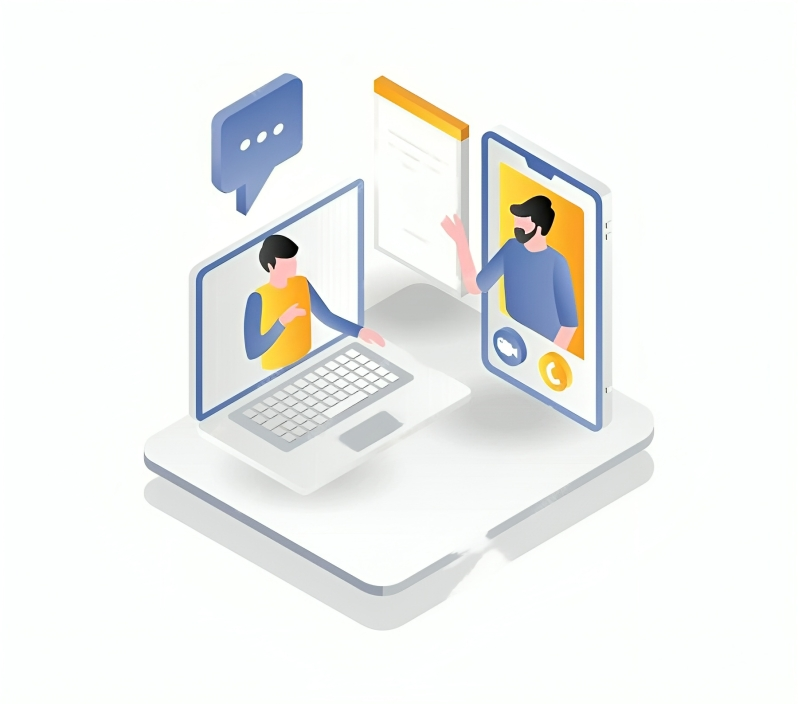Customer Acquisition Cost is not only an important metric for Software as a Service (SaaS) companies but also a competitive advantage in the long run. One of the most important metrics is Cost of Acquisition Cost— which means the total price of acquiring a new customer (marketing, sales, etc.) For SaaS companies, where recurring revenue two pieces of pie data, and customer lifetime value (CLV) can be the line of demarcation between success and failure, CAC is crucial. In this complete guide, you will learn everything about CAC, starting from what it is, how to decrease it, and how to use it to succeed in the long run.
Related Article: https://www.adlabz.co/what-is-a-mql-in-b2b-saas-marketing
Jump to:
What is Customer Acquisition Cost (CAC)?
Customer Acquisition Cost is the cost of acquiring a new customer. This encompasses all costs associated with marketing, sales, and other activities that help convert prospects into paying customers. CAC is especially crucial for SaaS companies since it relates directly to profitability and scalability.
The formula for CAC is simple:
CAC = Total Sales and Marketing Expenses / Number of New Customers Acquired
For example, if a SaaS company has a monthly sales and marketing spend of $50,000 and acquires 500 new customers in that month, its Customer Acquisition Cost would equal $100 per customer.
Why is CAC Important for SaaS Companies?
It is an important metric for SaaS businesses for a few reasons:
Profitability: It can nibble away at your margins, particularly if your customers don’t stick around long enough to earn back those acquisition costs.
Scalability: When you know your Customer Acquisition Cost, you can decide how much you have to invest for growth without sacrificing profitability.
Funding Episode: Investors analyze it to evaluate their business model efficiency. A low Customer Acquisition Cost compared to customer lifetime value (CLV) is key evidence of a sustainable business.
Tailor Resource Allocation: It helps to analyze which channels and strategies work more efficiently so that resources can be allocated optimally.

How Do You Calculate CAC Accurately?
The first step is understanding your sales and marketing efficiency. The formula is: Total sales and marketing costs / Total number of new customers acquired over a certain time frame.
Here is what the basic formula looks like:
CAC = (Marketing Costs + Sales Costs) / New Customers
So, let us consider you spent $20,000 on marketing and $10,000 on sales in a month and that you have added 100 new customers so, your CAC would be $300 per customer.
But this simple calculation has its limits. It also fails to consider intricacies such as long sales cycles, repeat customers, or freemium pricing models, which are prevalent in SaaS businesses. For example, a user could use a freemium account for months before signing up for a paid plan. Enterprise customers, as well, of course, take months to go from initial contact to paying customers.
To account for these nuances a more advanced formula for CAC is frequently employed. This approach takes into account the longer time frames required to convert a lead into a customer and smooths out fluctuations in the monthly budget. If your company’s average conversion time from lead to customer is 60 days, for example, this formula simply accounts for what expenses have been incurred over that time frame.
Here’s the process behind the advanced CAC formula:
CAC = [Marketing Expenses (n-60) + ½ Sales Expenses (n-30) + ½ Sales Expenses (n)]/(New Customers (n))
(Where n is the month it is now.)
This method accurately matches Customer Acquisition Cost costs with the time it takes to convert customers. This powerful formula provides SaaS businesses insight into the cost of acquiring a customer and helps them make informed business decisions on resource allocation and growth strategies.
What is a Good CAC for SaaS Companies?
What constitutes an ideal CAC will depend on the specific industry, business model, and target market. But as a general rule of thumb, many companies should strive for their CAC to be one-third or less than the customer’s complete lifetime value (CLV). This way, you’re using enough spending to bring in customers without hurting profitability.
So, for example, if your CLV is $900, your CAC should be less than $300. But it’s worth noting that what qualifies as a “good” CAC will depend on your growth stage. New businesses may have a higher Customer Acquisition Cost as they spend defensively, while mature businesses must work on streamlining Customer Acquisition Cost.
How Does CAC Relate to Customer Lifetime Value (CLV)?
CAC and CLV are basically two sides of the same coin. CAC calculates the cost of acquiring a customer while CLV estimates the revenue a customer will bring in during their lifetime. How these two metrics relate to each other is key to understanding the health of your business.
It’s a general rule of thumb that your CLV should be three times your CAC at a minimum. This ratio helps you confirm if you’re making enough revenue from each customer to break even on acquisition and still turn a profit. A too high CAC compared to CLV indicates that your business model might not be sustainable.
What Are the Common Mistakes in Calculating CAC?
While calculating CAC might seem simple, there are some key pitfalls to watch out for:
Missing Hidden Costs: A lot of businesses leave out indirect costs from Customer Acquisition Cost, such as overheads, software subscriptions, or employee benefits.
Disregarding Time: This can result in issues if expenses or customer acquisitions from multiple time periods are mixed together.
Not Accounting for Churn: If you have a high churn rate, your Customer Acquisition Cost may look lower than it actually is when you fail to account for lost customers.
How Can You Reduce CAC in SaaS?
Reducing CAC is the most important thing in a SaaS company to ensure profitability and scalability. Here are some strategies that have been proven to work:
- Fine-Tune Your Marketing Channels
Unfortunately, not all marketing channels are made equal. Monitor the Performance of Each Channel to Know the Highest ROI. Spend your money and time on the best channels.
- Improve Conversion Rates
A higher conversion rate means you have the same amount of traffic, but more customers. Ensure your website, landing pages, and sales funnel are optimized to make it easy for prospects to convert.
- Leverage Content Marketing
Producing high-quality original content can draw potential customers in to absorb – and learn from – it, thereby minimizing the need for costly pay-per-click ads. Trust building content like blog posts, eBooks, webinars, and case studies will all help but they take time to drive organic traffic.
- Implement Referral Programs
An effective method of acquiring new customers at a relatively lower cost is to incentivize existing customers to bring in new customers through referral programs. Dropbox is one of the well-known examples of a SaaS company that leveraged referrals for explosive growth.
- Use Automation Tools
Automation can handle repetitive tasks, freeing up your hands to do something more meaningful. With the help of CRM software, email marketing platforms, and chatbots, you can scale without having to hire more people.
- Focus on Retention
The cost of gaining new customers is valuable — but the cost of holding on to existing customers is significantly less. A higher Customer Acquisition Cost can still be handled if you reduce churn and increase CLV, resulting in improved long-run profitability.
How Can You Track and Measure CAC Effectively?
Monitoring customer acquisition costs involves a combination of tools and strategies:
Tools like Google Analytics, HubSpot, and Mixpanel can help you keep an eye on marketing performance and customer acquisition.
Your CRM should be integrated with your marketing tools for an overview of customer acquisition.
Dashboards that monitor metrics such as CAC, CLV, and churn rate in real-time help to track performance and make data-driven decisions.
CAC should not be a one-time assessment. Both need to be done with the regularity of review and strategy tweaking.

How Can CAC Influence SaaS Pricing Strategies?
Your pricing strategy will be directly affected by your CAC. If your CAC is high, you would have to price your product higher in order to remain profitable. Conversely, a low CAC means you could potentially have more room to competitively price your offerings.
Here are some aspects of how CAC moves the price:
Enable tiered pricing so you can target various customer groups and maximize your profits.
By capturing a large user base and converting a percentage of those into paying customers, freemium models can substantially decrease CAC.
Reduce CAC with annual billing since you get upfront revenue and better cash flow.
How Can You Use CAC to Improve Your Sales Process?
Understanding CAC allows you to optimize your sales process in many ways:
Spot the High-Value Leads: Direct your efforts towards leads that are most likely to convert with high CLV.
Reduce Sales Cycle: The shorter the sales cycle, the fewer resources are required to bring in a customer, thus decreasing Customer Acquisition Cost.
Optimize Your Sales Staff: Provide your sales team with the tools and training necessary to close more deals in a shorter time frame.
What Are the Important Metrics to Track With CAC?
It’s an important metric, but one of many you should be tracking. Here are important metrics to consider:
Customer Lifetime Value (CLV): The total revenue you expect from a single customer account.
Churn Rate: % of customers who cancel subscriptions during a time period.
ARPU (Average Revenue Per User): Average revenue per customer
Payback Period: How long it takes to pay back the cost of acquiring a customer.
Use CAC to Fundraise: How to Use CAC to Finance Your Startup
There has been heavy scrutiny by investors on SaaS companies that do an efficient job of acquiring customers. CAC to CLV ratio A low CAC compared to CLV is a great indicator of a scalable and profitable business. When pitching to investors, expect to:
Demonstrate Your CAC and CLV Ratio: Prove that your CAC is sustainable and you’re bringing in a good amount of revenue from each customer.
Emphasize Your Growth Strategy: Describe how you’ll be driving CAC down further and scaling your business.
What Are the Future Trends in CAC Optimization for SaaS?
As the world of SaaS matures, so too do the relationships with CAC optimization. Here are some trends to follow:
Artificial Intelligence (AI) & Machine Learning: AI-powered tools analyze a vast amount of data to recognize patterns and market campaign optimization.
Account-Based Marketing (ABM): ABM is about reaching high-value accounts with tailored campaigns, which could help to lower Customer Acquisition Cost.
Business Strategy: Highlight the importance of focusing on sustainable business strategies such as community building and partnership opportunities instead of solely relying on acquisition.
Sustainability: As customers become more environmentally conscious, sustainability-focused SaaS companies are likely to gain a competitive edge.
Conclusion
While Customer Acquisition Cost is an important metric for SaaS companies, it’s not merely a matter of minimizing costs; it’s about streamlining your complete customer acquisition process. Understanding this, making sure you keep track of it accurately, and then taking measures to improve it will lead to a sustainable and scalable business. The key is not simply to win new clients but to do it in the most profitable manner possible, with sustainable, long-term development in mind. If you approach it the right way, mastering CAC can be your secret sauce to success in the highly competitive field of SaaS.
You might also be interested:

